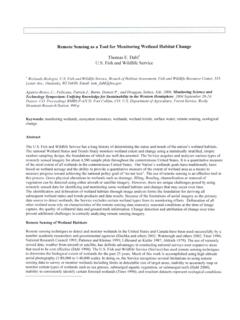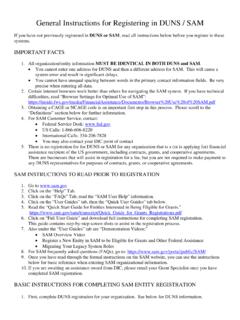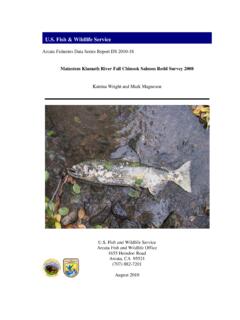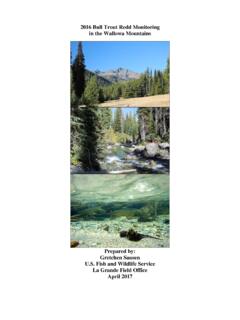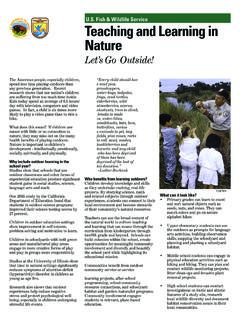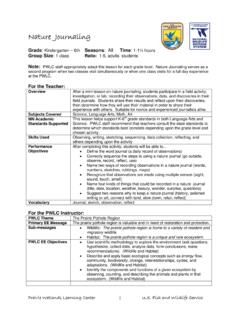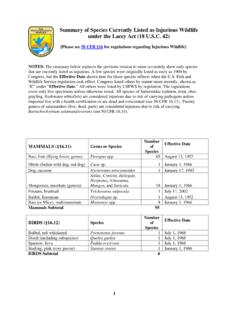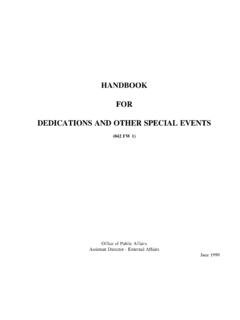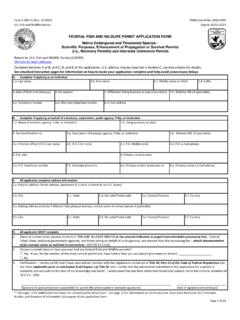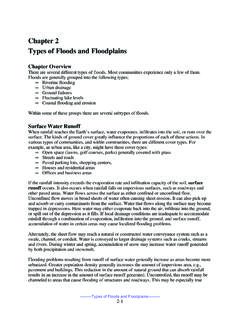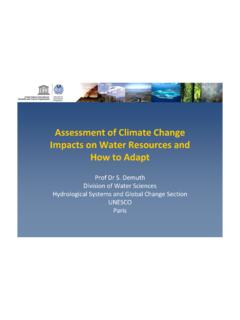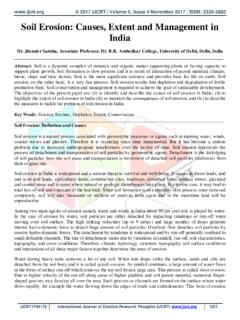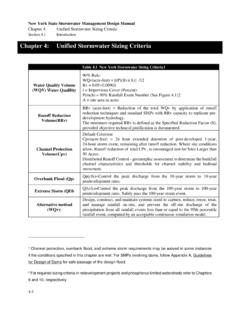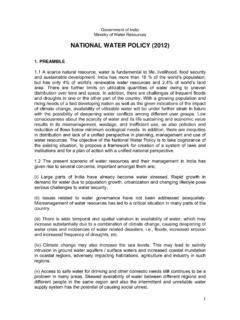Transcription of History of the CCC and WPA and other Depression-Era ...
1 1 History of the CCC and WPA and other Depression-Era Programs in Region 6 of the USFWS This is taken from: Region 6: Historical and Architectural Assessment of the Depression Era Work Projects, prepared by Lou Ann Speulda with contributions by Rhoda Owen Lewis, 2003 The Great Depression and Franklin D. Roosevelt The economy of the states encompassed by USFWS=s Region 6, in the 1920s and 1930s was primarily based on agricultural production and stock ranching. A wet-cycle in the 1900-1910s led to a boom period for settlers who began moving into more agriculturally marginal areas.
2 Indicators of a National economic slow-down were beginning to show by the late 1920s when several years of drought created conditions unfavorable for agriculture. Associated with the drought were years of poor agricultural practices. Farmers had stripped off the protective native prairie grasslands setting up a destructive chain of events that lifted the light top-soil, leaving behind fields that were unproductive. Over-grazing around small natural lakes removed protective vegetation from water sources. These agricultural practices and the unfortunate coincidence of drought conditions fundamentally changed the natural ecosystem of the plains.
3 floods and wind erosion caused further deterioration of the plains ecosystem. As much as one-third of North Dakota was affected by drought and failing farms (Hendrickson 1981). The stock-market crash of October 1929 did not, at first, affect the mid-western states because most farmers were not heavily invested in the Stock Market. The secondary wave of bank closures, decrease in available capitol for equipment and supplies, and shrinking market prices caught many farmers and ranchers by surprise. In the wake of falling land values, acute drought conditions, and a lack of a safety net the plight of America=s farmers turned desperate as the Nation entered the 1930s.
4 By the election year of 1932 between 12 and 15 million people were unemployed (Cohen 1980:2). The election of Franklin Roosevelt as President in 1932 unleashed a host of programs aimed at stemming the depression cycle and building the nation=s infrastructure to support the failing economy and overhauling the methods that had lead to the disastrous conditions. Roosevelt was a strong advocate for conserving natural resources and felt strongly that the Federal government should take an active role in the nation=s economy. To a greater extent than perhaps any other President, Roosevelt felt that action should be taken by the Federal government for the benefit of the public.
5 His somewhat romantic sentiment was turned into several broad brush executive orders to create work programs with a strong central conservation ethic. The programs were never ratified as permanent departments within the government structure, but they operated with a great amount of power and influence during his administration. The first 100 days of Roosevelt=s term were extremely productive, especially with the support of Congress, many emergency relief programs were created. Some of these programs continue to protect citizens even today, such as, the Federal Deposit Insurance Corporation (FDIC), Federal 2 Communications Commission (FCC), Federal Housing Administration (FHA), Securities and Exchange Commission (SEC), and the Social Security Board (SSB) (Cohen 1980:2).
6 Roosevelt walked a narrow line between upholding democratic principles of independence and initiating federal programs to rescue a nation from the brink of disaster. The Emergency Conservation Work (ECW) and Civilian Conservation Corps (CCC) Five days after taking the oath of office, President Roosevelt called a conference with the secretaries of Agriculture, Interior, and War, along with several others to discuss his ideas for recruiting 500,000 men to work in the nation=s forests and eroded farmlands. Roosevelt=s vision was to provide work opportunities, primarily for young men to repair the land from decades of poor management and over-use.
7 The final bill went through several changes, but on March 31, 1933 Congress passed the Emergency Conservation Work Act (Public Law No. 5, 73d Congress). On April 5, 1933 the President signed Executive Order No. 6101 creating the Emergency Conservation Work (ECW) program. Two weeks later, the Departments of Agriculture, War, Labor, and Interior once again convened to define the program and start implementing the new executive order (Paige 1985). The ECW was more popularly known as the Civilian Conservation Corps (CCC) or 3 C=s and the name was officially changed to the CCC in 1937 (Salmond 1967).
8 The ECW=s purpose was to create work opportunities that would not interfere with normal employment and were specifically directed toward conservation of natural resources. With this rather vague goal, Roosevelt appointed Robert Fechner as the Director of the ECW to organize the existing four departments into an Advisory Council for the ECW and establish tasks for each department (Merrill 1981:6-7). The Labor Department oversaw the recruitment with stations set up in counties across the nation. The local Labor Department made the selection of the recruits until 1939, when that function was taken over by the federal Labor Department.
9 The War Department administered the camps, physical training, transportation, and camp construction. The Agriculture and Interior Departments were in charge of finding work projects for the men that emphasized natural resource conservation. By using the strengths of each of the agencies, Roosevelt was able to develop a program without stigma of a military forced labor camp or competition with employed men. Only 37 days after signing the executive order, the first enrollee was signed on, and by July 1933, 250,000 boys were enrolled. The Army had successfully undertaken the largest peacetime mobilization of men the United States had ever seen, had built more than 1,300 camps, and had installed recruits in all of them (Salmond 1967:45).
10 Funding for the program was to be spent primarily on labor costs rather than equipment or machinery. Thus, the emphasis on hand-labor in the CCC. This was one of its strong points and also a weak point, as critics of the program derided the use of 100 men shoveling dirt to create a road rather than using a road grader. Yet, by the later years of the CCC, heavy equipment was being used and operating the machinery became an important learning opportunity for the young recruits (Cutler 1985). The men were expected to complete a duty period of six months, and could re-apply for six 3 month stints, for up to two years.

